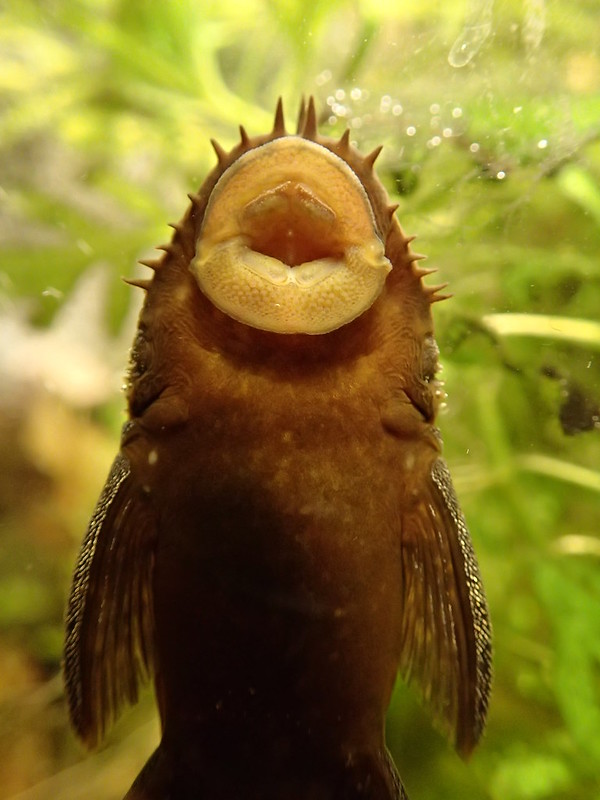Many aquarists tend to think of catfish simply as the "cleanup crew" and have them solely to keep the tank free of algae and to consume the bits of food that slip past the fish that feed higher in the tank. However this species is fascinating in its own right and breeding catfish is relatively easy in the home aquaria.
 |
| A Bristlenose Catfish (ancistrus dolichopterus) (male) is sitting on a coconut shell (Photo credit: Wikipedia) |
The bristlenose catfish are popular because of their novel looks and their hard work! Within days of adding a bristlenose to a tank, every trace of algae will be gone. They are easy to breed in a community tank. The mature male has much longer bristles than the female and tends to be larger. They are not overly critical about water conditions but do prefer slightly acidic water, with a pH between 6.5 and 7 and a temperature between 75 and 80 degrees F.
As the bristelnose is a cave spawner you need to make sure that there are plenty of suitable hiding places in the tank. PVC pipe, flowerpots tipped on their sides, coconut shells and bogwood which the bristelnose likes not only for hiding under but for eating as well, are all good choices. They will also welcome thick plants around the perimeter of the tank Keep the water well oxygenated with good filtration, an airstone and pump.
To condition your bristelnose for breeding feed them with shrimp pellets, and some semi- boiled vegetables such as zucchini and cucumber. Quite often a large water change or slight increase in temperature can trigger spawning. Courting behavior varies, some pairs will spend days in preparation while others get straight "down to business". The male chooses a nest site in the PCV pipe or flowerpot and the female will then join him to lay a clutch of around fifty adhesive orange colored eggs. The male then fertilizes them and begins fanning them with his fins to aerate them.
The male is on duty guarding the eggs until they hatch in about three to five days. In another week they will become free swimming and will then need to be fed. Suitable foods are finely crushed vegetables like blanched lettuce, peas, zucchini as well as baby brine shrimp and minced bloodworms. Remember that bristelnose are bottom feeders and make sure that the foods make it to the bottom for them and are not snatched up by the other fish. Another source of food can be created by putting some rocks in jars of tankwater and leaving them on a sunny windowsill where they will grow a good coating of algae. Then place the rocks in the tank for the fry to feed on. Regular water changes together with a varied diet will ensure the healthy growth of the fry.
Jen Clements is an experienced fish breeder and aquarium specialist. Article Source: EzineArticles |


